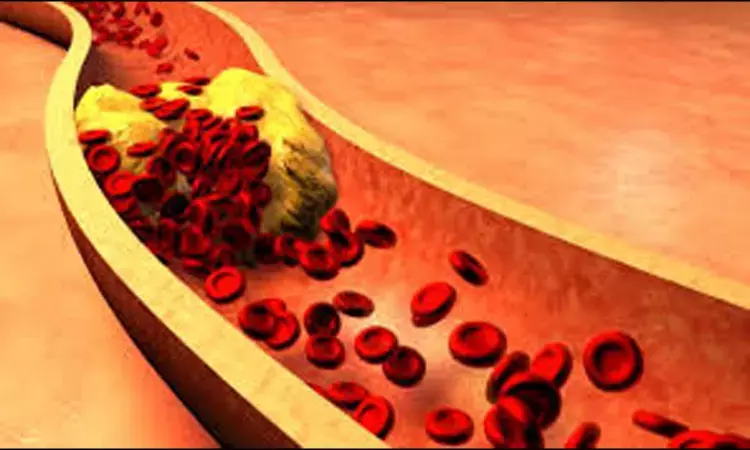- Home
- Medical news & Guidelines
- Anesthesiology
- Cardiology and CTVS
- Critical Care
- Dentistry
- Dermatology
- Diabetes and Endocrinology
- ENT
- Gastroenterology
- Medicine
- Nephrology
- Neurology
- Obstretics-Gynaecology
- Oncology
- Ophthalmology
- Orthopaedics
- Pediatrics-Neonatology
- Psychiatry
- Pulmonology
- Radiology
- Surgery
- Urology
- Laboratory Medicine
- Diet
- Nursing
- Paramedical
- Physiotherapy
- Health news
- Fact Check
- Bone Health Fact Check
- Brain Health Fact Check
- Cancer Related Fact Check
- Child Care Fact Check
- Dental and oral health fact check
- Diabetes and metabolic health fact check
- Diet and Nutrition Fact Check
- Eye and ENT Care Fact Check
- Fitness fact check
- Gut health fact check
- Heart health fact check
- Kidney health fact check
- Medical education fact check
- Men's health fact check
- Respiratory fact check
- Skin and hair care fact check
- Vaccine and Immunization fact check
- Women's health fact check
- AYUSH
- State News
- Andaman and Nicobar Islands
- Andhra Pradesh
- Arunachal Pradesh
- Assam
- Bihar
- Chandigarh
- Chattisgarh
- Dadra and Nagar Haveli
- Daman and Diu
- Delhi
- Goa
- Gujarat
- Haryana
- Himachal Pradesh
- Jammu & Kashmir
- Jharkhand
- Karnataka
- Kerala
- Ladakh
- Lakshadweep
- Madhya Pradesh
- Maharashtra
- Manipur
- Meghalaya
- Mizoram
- Nagaland
- Odisha
- Puducherry
- Punjab
- Rajasthan
- Sikkim
- Tamil Nadu
- Telangana
- Tripura
- Uttar Pradesh
- Uttrakhand
- West Bengal
- Medical Education
- Industry
TyG index helps identify young CAD patients and predict their risk of developing target lesion failure

China: A recent study has shown a positive association of the triglyceride-glucose (TyG) index with early-onset coronary artery disease (EOCAD) and incident target lesion failure (TLF).
The findings, published in Cardiovascular Diabetology, suggest the TyG index to be a valuable component of future efforts for improving TLF outcome prediction and CAD risk stratification among young adults.
The increase in EOCAD has become an emerging public health concern. EOCAD patients were more likely to be treated with target lesion failure, and percutaneous coronary intervention (PCI) than their older counterparts. Therefore, EOCAD has been a focus of growing concern considering their life-long atherosclerotic burden. Early identification of young people at risk for CAD is of great importance for better management and prevention. There is a need for non-invasive predictive biomarkers.
Against the above background Yan Zheng, Human Phenome Institute, Fudan University, Shanghai, China, and colleagues aimed to evaluate the usefulness of the TyG index, a novel marker of insulin resistance, in identifying young CAD patients and predicting their risk of developing target lesion failure.
For this purpose, the researchers recruited 1513 EOCAD patients (luminal narrowing ≥ 70%) and 1513 (luminal narrowing < 30%) age-matched controls, both aged 45 years or younger, from 38 hospitals in China between 2017 and 2020. EOCAD patients who underwent successful PCI were followed for incident TLF. TyG index was defined as Ln [fasting triglyceride (mg/dL) × fasting blood glucose (mg/dL)/2].
The association of the TyG index with prevalent EOCAD and incident TLF, respectively was evaluated using logistic regression and Cox proportional hazards modeling. The discriminatory ability of the TyG index was evaluated by the area under the receiver-operating characteristic curve (AUC).
The researchers reported the following findings:
- TyG index was positively associated with the prevalence of EOCAD (adjusted odds ratio: 1.40).
- The addition of the TyG index to an empirical risk model provided an improvement in diagnostic ability for EOCAD, with a net reclassification improvement of 0.10.
- During a medium of 33-month follow-up, 3.3% of patients experienced TLF.
- The Multivariate Cox regression model revealed that the TyG index was an independent risk factor for TLF (adjusted hazard ratio [HR]: 2.410 comparing the top to bottom TyG index tertile groups; HR: 1.30, per SD increase in TyG index).
- Compared with a model of conventional risk factors alone, the addition of the TyG index modestly improved the AUC to predict TLF.
"Our findings suggest the usefulness of the TyG index in screening subjects with severe atherosclerotic CAD among young adults and in identifying EOCAD patients at high risk of future TLF so that intensive strategies can be provided," the researchers concluded.
Reference:
Shali, S., Luo, L., Yao, K. et al. Triglyceride-glucose index is associated with severe obstructive coronary artery disease and atherosclerotic target lesion failure among young adults. Cardiovasc Diabetol 22, 283 (2023). https://doi.org/10.1186/s12933-023-02004-1
Dr Kamal Kant Kohli-MBBS, DTCD- a chest specialist with more than 30 years of practice and a flair for writing clinical articles, Dr Kamal Kant Kohli joined Medical Dialogues as a Chief Editor of Medical News. Besides writing articles, as an editor, he proofreads and verifies all the medical content published on Medical Dialogues including those coming from journals, studies,medical conferences,guidelines etc. Email: drkohli@medicaldialogues.in. Contact no. 011-43720751


